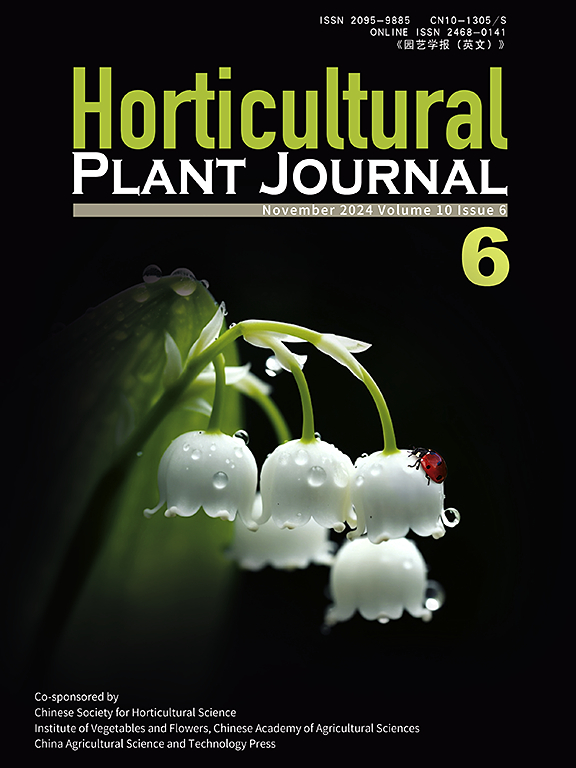Melatonin modified root architecture system and accelerated mineral nutrient concentration of different pepper species under vanadium toxicity
IF 6.2
1区 农林科学
Q1 HORTICULTURE
引用次数: 0
Abstract
Heavy metal contamination has adversely affected crop productivity around the world. Vanadium (V) toxicity is a significant environmental factor that lowers agricultural productivity by inhibiting plant development, diminishing nutrient uptake, and damaging root morphology. Melatonin (ME) is a well-known powerful antioxidant and multifunctional molecule that improves the resilience of plants against environmental stressors. In this work, we investigated the response of different pepper species (褪黑素改变了不同辣椒品种钒毒性下的根构型,加速了矿质养分浓度
重金属污染对世界各地的作物产量产生了不利影响。钒(V)毒性是一个重要的环境因子,通过抑制植物发育、减少养分吸收和破坏根系形态来降低农业生产力。褪黑素是一种众所周知的强抗氧化剂和多功能分子,可以提高植物对环境胁迫的恢复能力。本文研究了不同辣椒品种(Capsicum annuum L. (CA)、c.b accatum L. (CB)、c.b pubescens Ruiz &;奶油水果蛋白饼。(CP)对V毒性的影响,以及ME在增强V胁迫耐受性中的可能作用。用5 ~ μmol的ME预处理辣椒根。L−1)浸泡3天,再加入V (30mg)。L−1)作为应激处理2周。结果表明,经ME预处理的植株在V胁迫下根系活性和生物量显著提高。施ME能显著改善辣椒根系形态和矿质养分积累。此外,ME处理通过降低V从根到地上部的转运来降低叶片V浓度。综上所述,ME处理改变了V胁迫下辣椒根系构型,提高了矿质养分浓度,减少了V的积累。
本文章由计算机程序翻译,如有差异,请以英文原文为准。
求助全文
约1分钟内获得全文
求助全文
来源期刊

Horticultural Plant Journal
Environmental Science-Ecology
CiteScore
9.60
自引率
14.00%
发文量
293
审稿时长
33 weeks
期刊介绍:
Horticultural Plant Journal (HPJ) is an OPEN ACCESS international journal. HPJ publishes research related to all horticultural plants, including fruits, vegetables, ornamental plants, tea plants, and medicinal plants, etc. The journal covers all aspects of horticultural crop sciences, including germplasm resources, genetics and breeding, tillage and cultivation, physiology and biochemistry, ecology, genomics, biotechnology, plant protection, postharvest processing, etc. Article types include Original research papers, Reviews, and Short communications.
 求助内容:
求助内容: 应助结果提醒方式:
应助结果提醒方式:


